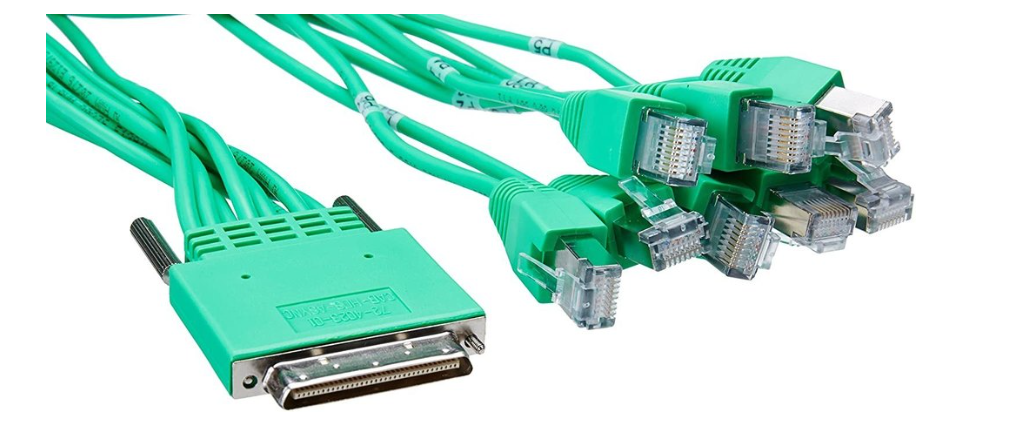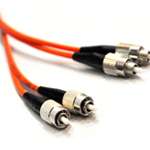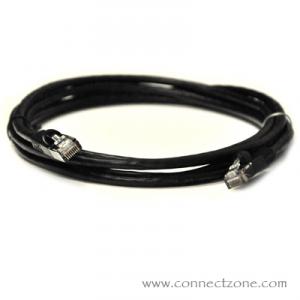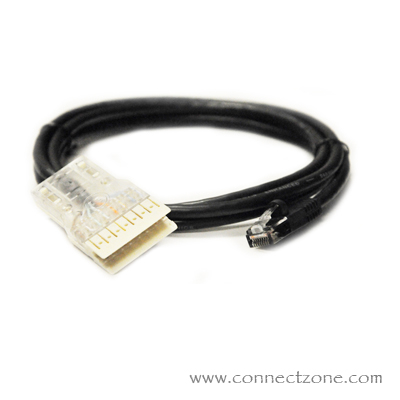We use cookies to make your experience better. Read more
22 Mar, 2011
Multi-mode fiber has higher "light-gathering" capacity than single-mode optical fiber. In practical terms, the larger core size simplifies connections and also allows the use of lower-cost electronics such as light-emitting diodes (LEDs) and vertical-cavity surface-emitting lasers (VCSELs) which operate at the 850 nm and 1300 nm wavelength (single-mode fibers used in telecommunications operate at 1310 or 1550 nm and need more costly laser sources. Single mode fibers exist for very all visible wavelengths of light). However, compared to single-mode fibers, the multi-mode fiber bandwidth-distance product limit is lower. Because multi-mode fiber has a bigger core-size than single-mode fiber, it supports over one propagation mode; hence it is limited by modal dispersion, while single mode is not. The LED light sources sometimes used with multi-mode fiber produce a range of wavelengths and these each propagate at different speeds. In contrast, the lasers used to drive single-mode fibers produce coherent light of a single wavelength. This chromatic dispersion is another limit to the useful length for multi-mode fiber optic cable. Because of their larger core size, multi-mode fibers have a higher numerical aperture which means they are better at collecting light than single-mode fibers. Due to the modal dispersion in the fiber, multi-mode fiber has higher pulse spreading rates than single mode fiber, limiting multi-mode fibers information transmission capacity. Single-mode fibersare most often used in high-precision scientific research because the allowance of one propagation mode of the light makes the light simpler to focus properly.
Jacket color is sometimes used to distinguish multi-mode cables from single-mode, but it cannot always be relied on to distinguish types of cable. The standard TIA-598C recommends, for civilian applications, the use of a yellow jacket for single-mode fiber, and orange for 50/125 µm (OM2) and 62.5/125 µm (OM1) multi-mode fiber. Aqua fiber is recommended for 50/125 µm "laser optimized"OM3 fiber.
The equipment used for communications over multi-mode optical fiber is much less costly than that for single-mode optical fiber. Typical transmission speed and distance limits are 100 Mbit/s for distances up to 2 km (100BASE-FX)
Because of its high capacity and reliability, multi-mode optical fiber usually is used for backbone applications in buildings. An increasing number of users are taking the benefits of fiber closer to the user by walking fiber to the desktop or to the zone. Standards-compliant architectures such as Centralized Cabling and fiber to the telecom enclosure offer users the ability to leverage the distance capabilities of fiber by centralizing electronics in telecommunications rooms, than having active electronics on each floor.
Single-mode fibersare most often used in high-precision scientific research because the allowance of one propagation mode of the light makes the light simpler to focus properly.
Jacket color is sometimes used to distinguish multi-mode cables from single-mode, but it cannot always be relied on to distinguish types of cable. The standard TIA-598C recommends, for civilian applications, the use of a yellow jacket for single-mode fiber, and orange for 50/125 µm (OM2) and 62.5/125 µm (OM1) multi-mode fiber. Aqua fiber is recommended for 50/125 µm "laser optimized"OM3 fiber.
The equipment used for communications over multi-mode optical fiber is much less costly than that for single-mode optical fiber. Typical transmission speed and distance limits are 100 Mbit/s for distances up to 2 km (100BASE-FX)
Because of its high capacity and reliability, multi-mode optical fiber usually is used for backbone applications in buildings. An increasing number of users are taking the benefits of fiber closer to the user by walking fiber to the desktop or to the zone. Standards-compliant architectures such as Centralized Cabling and fiber to the telecom enclosure offer users the ability to leverage the distance capabilities of fiber by centralizing electronics in telecommunications rooms, than having active electronics on each floor.
 Single-mode fibersare most often used in high-precision scientific research because the allowance of one propagation mode of the light makes the light simpler to focus properly.
Jacket color is sometimes used to distinguish multi-mode cables from single-mode, but it cannot always be relied on to distinguish types of cable. The standard TIA-598C recommends, for civilian applications, the use of a yellow jacket for single-mode fiber, and orange for 50/125 µm (OM2) and 62.5/125 µm (OM1) multi-mode fiber. Aqua fiber is recommended for 50/125 µm "laser optimized"OM3 fiber.
The equipment used for communications over multi-mode optical fiber is much less costly than that for single-mode optical fiber. Typical transmission speed and distance limits are 100 Mbit/s for distances up to 2 km (100BASE-FX)
Because of its high capacity and reliability, multi-mode optical fiber usually is used for backbone applications in buildings. An increasing number of users are taking the benefits of fiber closer to the user by walking fiber to the desktop or to the zone. Standards-compliant architectures such as Centralized Cabling and fiber to the telecom enclosure offer users the ability to leverage the distance capabilities of fiber by centralizing electronics in telecommunications rooms, than having active electronics on each floor.
Single-mode fibersare most often used in high-precision scientific research because the allowance of one propagation mode of the light makes the light simpler to focus properly.
Jacket color is sometimes used to distinguish multi-mode cables from single-mode, but it cannot always be relied on to distinguish types of cable. The standard TIA-598C recommends, for civilian applications, the use of a yellow jacket for single-mode fiber, and orange for 50/125 µm (OM2) and 62.5/125 µm (OM1) multi-mode fiber. Aqua fiber is recommended for 50/125 µm "laser optimized"OM3 fiber.
The equipment used for communications over multi-mode optical fiber is much less costly than that for single-mode optical fiber. Typical transmission speed and distance limits are 100 Mbit/s for distances up to 2 km (100BASE-FX)
Because of its high capacity and reliability, multi-mode optical fiber usually is used for backbone applications in buildings. An increasing number of users are taking the benefits of fiber closer to the user by walking fiber to the desktop or to the zone. Standards-compliant architectures such as Centralized Cabling and fiber to the telecom enclosure offer users the ability to leverage the distance capabilities of fiber by centralizing electronics in telecommunications rooms, than having active electronics on each floor. 0 Comment(s)






